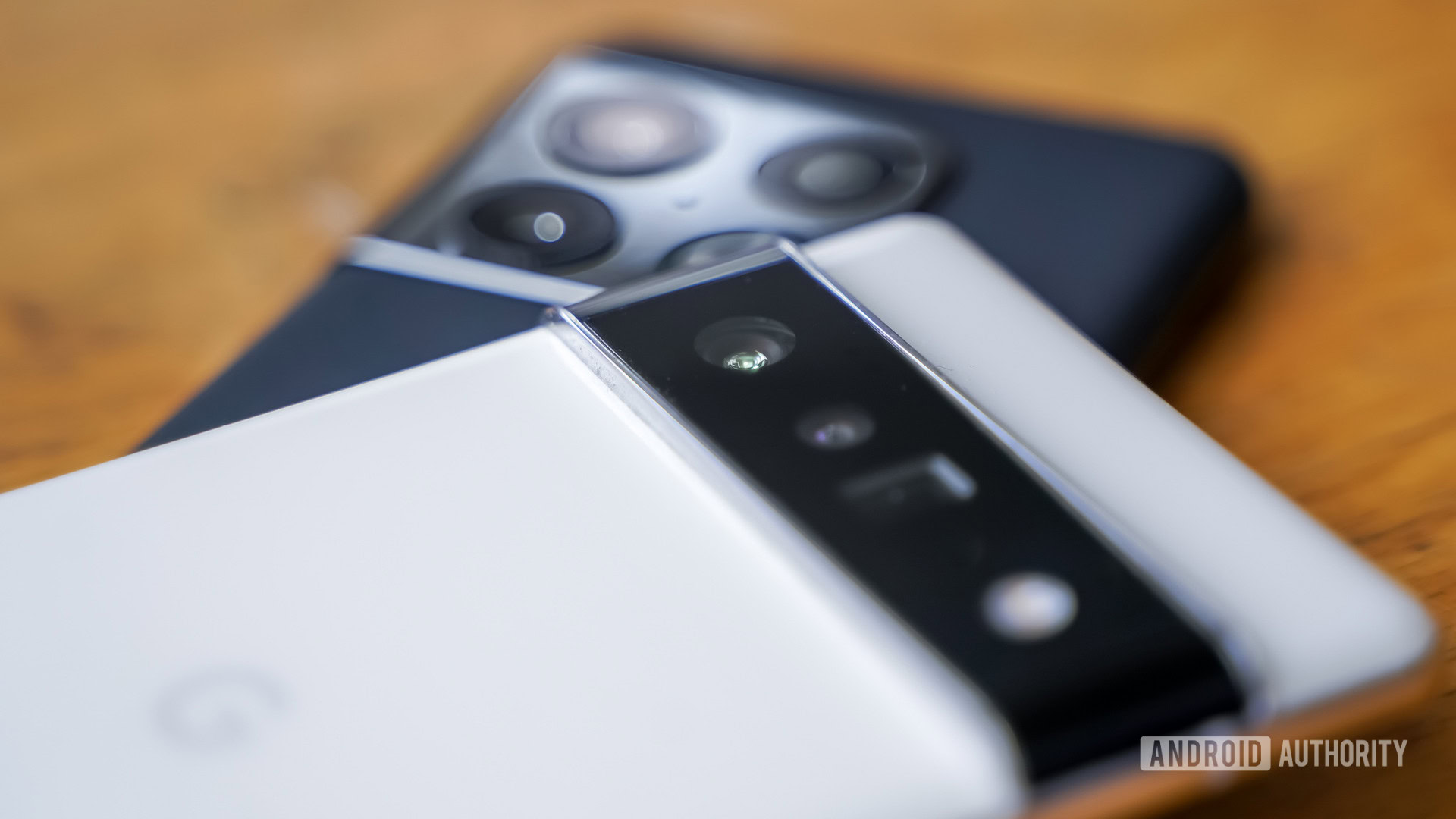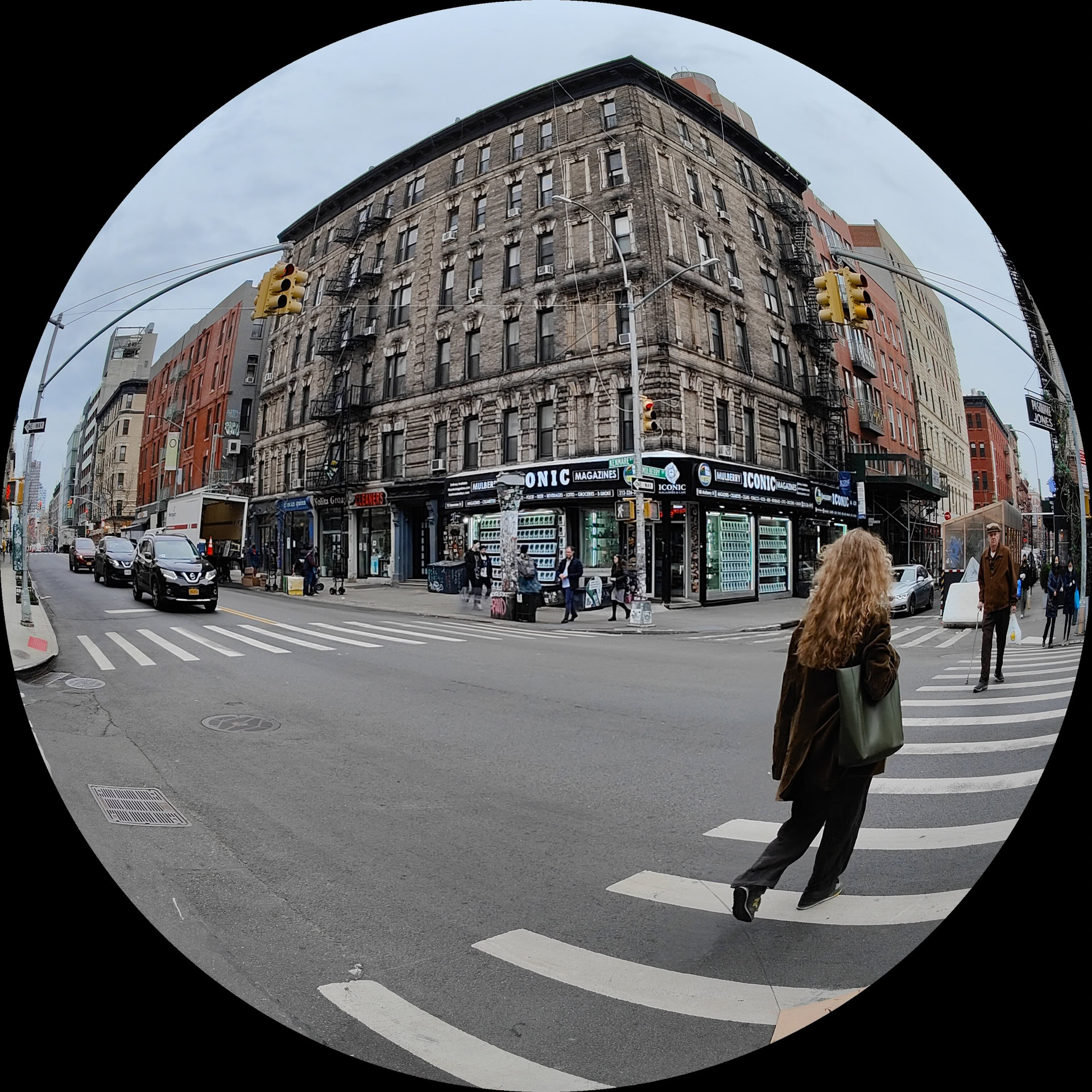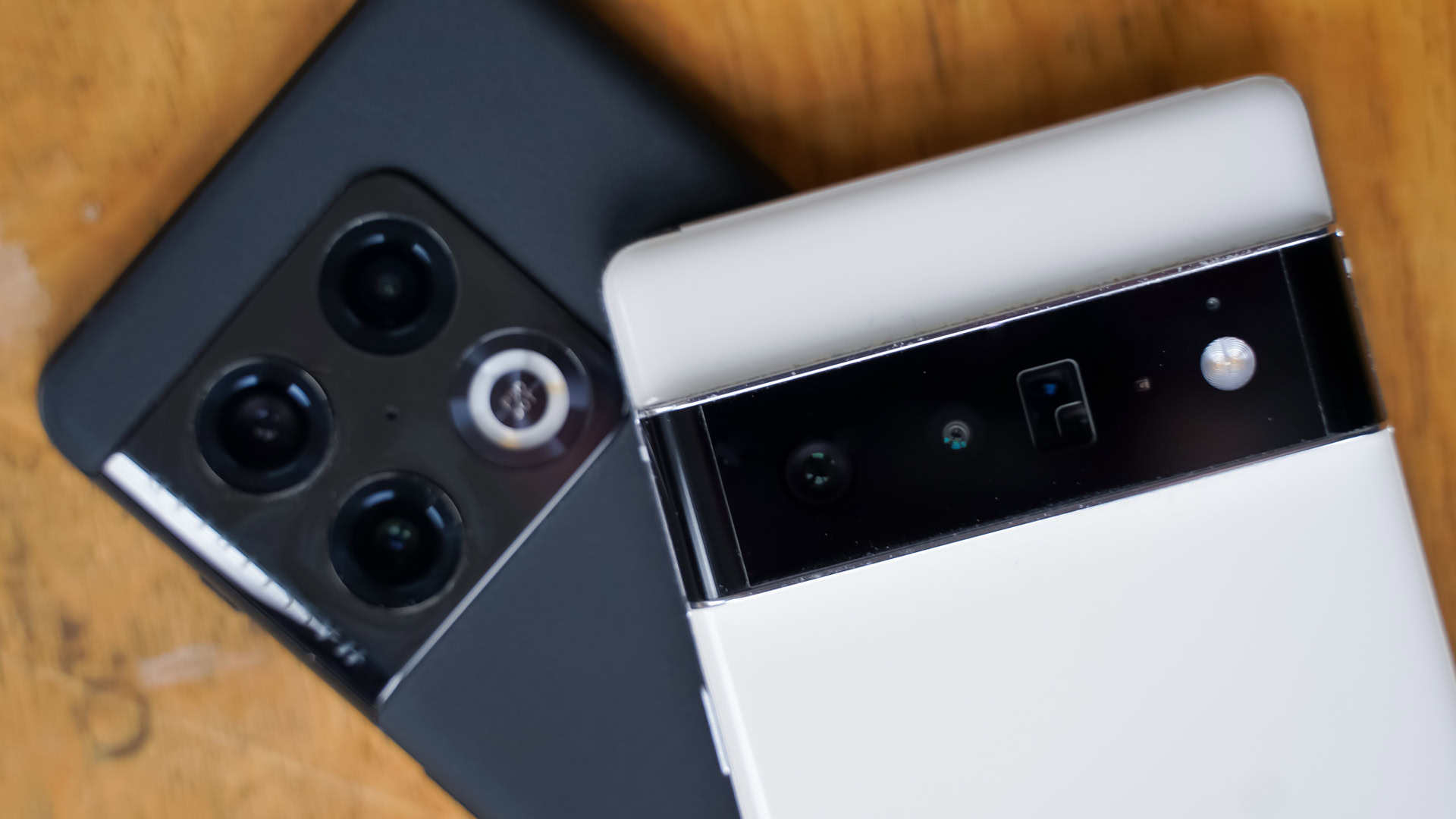Affiliate links on Android Authority may earn us a commission. Learn more.
Camera shootout: OnePlus 10 Pro vs Google Pixel 6 Pro

The OnePlus 10 Pro aims to challenge the best in flagship photography with its second-generation “Hasselblad Camera for Mobile” system. The company makes bold claims about the new camera, particularly concerning its 10-bit “billion color solution” and new 150-degree ultrawide camera. We’ve made our initial judgment about the phone and its general camera performance in our full review, but how does the OnePlus 10 Pro compare to the mighty Google Pixel 6 Pro? Can OnePlus and its Hasselblad partnership outgun Google and its algorithmic photography philosophy?
With some photo samples in tow, we’ve assembled Android Authority’s OnePlus 10 Pro vs Google Pixel 6 Pro shootout. Let’s get to it. You can view the full-resolution photo samples for the OnePlus 10 Pro here and the Google Pixel 6 Pro here.
Our verdict: OnePlus 10 Pro review | Google Pixel 6 Pro review
OnePlus 10 Pro vs Google Pixel 6 Pro: Camera specs
| OnePlus 10 Pro | Google Pixel 6 Pro | |
|---|---|---|
Rear Camera | OnePlus 10 Pro -48MP main, 1.12μm, ƒ/1.8, 1/1.43 inch sensor, 23mm lens, OIS -50MP ultrawide, 1/2.76 inch sensor, 110- and 150-degree FoV, fisheye -8MP telephoto, 1.0μm, f/2.4, 3.3x optical zoom, OIS | Google Pixel 6 Pro -50MP main, 1.2 μm, ƒ/1.85, 82-degree FoV, 1/1.31-inch sensor, OIS -12MP ultrawide, 1.25 μm, ƒ/2.2, 114-degree FoV -48MP telephoto, 0.8 μm, ƒ/3.5, 23.5-degree FoV, 1/2-inch sensor, 4x optical zoom, OIS -Laser AF |
Rear Video | OnePlus 10 Pro -8K at 24fps -4K at 30/60/120fps -1080p at 30/60fps | Google Pixel 6 Pro -4K at 30/60fps -1080p at 30/60fps -720p at 30fps |
Front Camera | OnePlus 10 Pro -32MP, ƒ/2.4 | Google Pixel 6 Pro -11.1MP single, 1.22 μm, ƒ/2.2, 94-degree FoV |
Front Video | OnePlus 10 Pro -1080p at 60fps -720p at 30fps | Google Pixel 6 Pro -4K at 30fps -1080p at 30/60fps |
Back in 2021, OnePlus partnered with famed camera maker Hasselblad. This multi-year agreement started out leveraging the brand’s input on color processing and has expanded to deeper software and hardware cooperation this year. OnePlus is looking to get ahead of the competition by leveraging Hasselblad’s expertise.
By comparison, Google’s line of Pixel phones has long benefited from the company’s investment in its in-house computational photography algorithms. These efforts have culminated in Google’s Tensor processor inside the Pixel 6 series, which marries image and machine learning processing components to optimally run Google’s algorithms.
More reading: Snapdragon 8 Gen 1 vs Google Tensor
Both phones offer a triple camera arrangement with some unique hardware features. Their main cameras are similar, with OnePlus boasting a 48MP, 1/1.43 inch sensor with f/1.8 aperture versus Google’s slightly bigger 50MP, 1/1.31-inch sensor with f/1.85 aperture lens. Both offer OIS and EIS, as well as pixel binning for better light capture, but the specs suggest the Pixel 6 Pro has a slight edge. On the front, OnePlus provides a 32MP f/2.4 selfie camera versus Google’s 11.1MP and f/2.2 setup.
OnePlus does something more unique with its ultrawide camera. The 50MP, 1/2.76 inch, f/2.4 camera has a 110-degree field of view that can also produce 150-degree and fisheye pictures using special shooting modes. It offers a few more options than your typical wide-angle camera. The Pixel 6 Pro sticks to a more conventional wide shooter with a 12MP sensor, ƒ/2.2 aperture, and 114-degree field of view, but it lacks autofocus capabilities.
OnePlus leans on Hasselblad colors while Google leverages its AI photography smarts.
The two phones are also different in the optical zoom department. The 10 Pro has an 8MP sensor with an f/2.4 lens and 3.3x optical zoom. Google’s Pixel 6 Pro uses a 48MP binned sensor with a narrower f/4.5 aperture but a longer 4x optical zoom. Both leverage OIS to reduce shake and blur when zooming in.
OnePlus and Google take unique paths to create the best possible camera experience for their customers. Now that we’ve covered the specs, let’s look at the samples.
See also: The best camera phones you can buy
Daylight samples
This first image sets the tone for many that will follow. While the OnePlus 10 Pro photo looks bright and colorful at first glance, it’s an overexposed shot with oversaturated and unrealistic colors. The Pixel 6 Pro photo, by comparison, looks dull. It is, however, the more accurate of the two by a wide margin. Focus is fine in both photos, as is white balance.
The 10 Pro’s white balance leans a bit yellow in this park bench shot, making it the warmer photo. While it is plenty sharp, the exposure is once again too high, which clips the detail in the clouds. There’s more nuance in the clouds of the shot on the Pixel 6 Pro, as well as fine details in the dirt near the bench and the bark of the trees in the background. The Pixel 6 Pro is a bit underexposed. It could have notched this exposure up a bit and probably still retained detail. Either way, it’s again the more accurate.
In this color study, we see more of the same. The 10 Pro is slightly overexposed, and colors are boosted excessively. For example, look at how the smaller orange circles are blown out into the red hues. In contrast, the shot from the 6 Pro comes across as almost moody. Some might prefer the bright look of the OnePlus image, but the Pixel is more accurate and retains much more dynamic range.
This sample is curious. The color of the fire hydrant itself is oversaturated, and the 10 Pro’s shot is sharper than the Pixel’s. The OnePlus also underexposed some of the background buildings, which gives the Pixel the edge when it comes to detail. Also, the 10 Pro’s image has more noise in it.
Indoor lighting
Differences in these indoor photos are harder to spot. Their exposure is about the same in this food snap. However, colors look richer in the OnePlus 10 Pro shot, and in this instance, it pays off. The fries in the Pixel 6 Pro snap look bland in comparison and less enticing. Focus is better in the OnePlus image, though there’s still more detail available in the darker spots of the Pixel photo.
In our second snap, the Pixel 6 crushes the 10 Pro when it comes to clarity. The OnePlus is soft and noisy throughout. Far more detail is visible in the photo from the 6 Pro. And once again, the image from the 10 Pro is warmer and boosts the colors a bit too much. The Pixel 6 has the more accurate shot in this instance.
Night photography
These could go either way, depending on what you want from your night photography. The shot from the 10 Pro is brighter and more colorful. However, the tone leans too far toward yellow and is simply not true to life. Focus and clarity are pretty good, though. The shot from the Pixel 6 Pro is more accurate but much darker and less colorful. It also has less noise than the shot from the 10 Pro.
More reading: The best triple camera phones available
This comparison more clearly speaks for itself. Literally. The shot from the 10 Pro had trouble balancing the high dynamic range in the photo, thus, you have dark areas around the store with no detail and yet blown out colors in the little signs surrounding the store. It’s also soft and noisy. The shot from the Pixel 6 Pro is off in terms of white balance, but it does a much better job of balancing all the exposure elements in the picture. Sharpness is far better, as evidenced by the ability to read all the small bits of text, and there’s far less noise.
Portraits and selfies
The differences between these two selfies are night and day. The OnePlus 10 Pro almost blows out the whole image. It’s overexposed and too warm in terms of color tone. My black jacket looks gray, the trees in the background are hardly in focus, and detail is lost everywhere. The selfie from the Pixel 6 Pro manages to get just about everything right. My jacket is closer to actual black, the sky and trees are a more natural color, and there’s far more detail in the background — which sometimes you want in a selfie! The only drawback is that the Pixel 6’s shot is a tad oversharp.
These OnePlus 10 Pro and Google Pixel 6 Pro portrait samples are similar to the selfies in most respects. Edge detection is good and blur quality is about the same, so the subject stands out nicely. However, the OnePlus 10 Pro’s portrait gets the color wrong and blows out the details. The portrait from the Pixel 6 Pro is simply superior.
Check out: The best camera phones you can get
Ultrawide and zoom
Thanks to the similar field of view of the two cameras, this ultrawide comparison looks about on par in terms of width and optical distortion. This is exactly the sort of fun shot ultrawide cameras were designed for. Shame that the 10 Pro blew out the sky, is heavily processed, and is very soft in terms of focus. The photo from the 6 Pro is properly exposed and shows much better detail.
Next, zoomed photos at the maximum optical setting for each phone. That’s 3.3x for the 10 Pro and 4x for the Pixel 6 Pro. The shot from the 10 Pro is intensely noisy, and the colors are oversaturated almost to comical levels. Furthermore, the focus is way off. Look at the Empire State Building in the background to see what I mean. Comparatively, the Pixel 6 Pro shot is far sharper and cleaner throughout the depth of the photo. The Pixel 6 Pro has much better zoom performance in this sample.
Above, you’ll see a collection of shots across the OnePlus 10 Pro and Google Pixel 6 Pro zoom range, from ultrawide to their maximum digital zoom. The 10 Pro tops out at 30x hybrid zoom, while the Pixel 6 Pro tops out at 20x. You can plainly see that the Pixel 6 Pro captures more detail in nearly every photo, particularly the 10x and 20x shots, where the 10 Pro’s ability to zoom simply breaks down. The 30x shot from the 10 Pro is pretty rough-looking. Even though the Pixel 6 Pro doesn’t offer the same digital zoom range as the 10 Pro, it does a far better job with what it has.
More reading: How digital, optical, and hybrid zoom work
Last, here’s a comparison of the 10 Pro’s extended ultrawide modes against the Google Pixel 6 Pro’s widest shot. Keep in mind that the 150-degree and fisheye shots aren’t available to the 6 Pro. They are soft, noisy, and over-processed, but they can be fun from time to time.

OnePlus 10 Pro vs Google Pixel 6 Pro camera test: The verdict

There’s no question that our OnePlus 10 Pro vs Google Pixel 6 Pro shootout produced photos with distinct styles. Where the 10 Pro leans heavily into over-saturated colors and boosted brightness, the 6 Pro is more reserved in both respects, preserving details and delivering cleaner shots along the way. The differences are most obvious when shooting outdoors during the day with plenty of color around. The OnePlus’s white balance is consistently too warm, but at least focus was generally good. The Pixel was more apt to keep a neutral white balance, and it also offered sharp focus with better exposure and detail.
Which phone takes better photos, the OnePlus 10 Pro or Google Pixel 6 Pro?
The photos from the ultrawide and telephoto cameras have their issues. The OnePlus 10 Pro’s ultrawide shooter showed more noise and processing, resulting in less detail than the ultrawide on the Pixel 6 Pro. However, we did spot some chromatic aberration in the Pixel’s lens. Meanwhile, the 10 Pro produces fairly soft focus up to its 3.3x optical capability with limited detail, and the usefulness of its zoom capabilities nosedives steeply the further you zoom. The Pixel 6 Pro and its 4x optical zoom are sharper throughout the focal range and dramatically better at 10x and 20x shots. Even the Pixel’s selfies are sharper, despite having one-third as many pixels as the 10 Pro.
The Pixel 6 Pro takes better pictures than the OnePlus 10 Pro from its selfie, main, ultrawide, and zoom cameras. It's a slam dunk.
In this comparison, it’s easy to declare the Google Pixel 6 Pro the better camera package. Although some of the samples from the OnePlus 10 Pro may look impressive due to their bright, cheery colors, they simply aren’t accurate. It’s always possible to boost brightness and saturation when editing pics after the fact. The Google Pixel 6 Pro ($899) runs the same price as the OnePlus 10 Pro and is a superior phone in other ways, thanks to its IP rating, more distinct hardware, and slightly better software update promise.
Once again, OnePlus hasn’t quite risen to the level of today’s top competitors. But if you’re not convinced by the Pixel either, Samsung’s latest devices are solid choices. The S22 Ultra ($1,199) is a pricey option, but it has everything — including the S Pen stylus and a second 10x optical telephoto camera for dramatic 100x Space Zoom shots. The S22 Plus ($999) is closer in price to the OnePlus 10 Pro and is the better option as a winning all-rounder. It may not have the S Pen or second telephoto of the S22 Ultra, but it’s virtually as good in the photography department and has better battery life to boot. We’d also suggest the Apple iPhone 13 Pro Max ($1,099) or the smaller iPhone 13 Pro ($999) as good options for photography.
More camera shootouts: